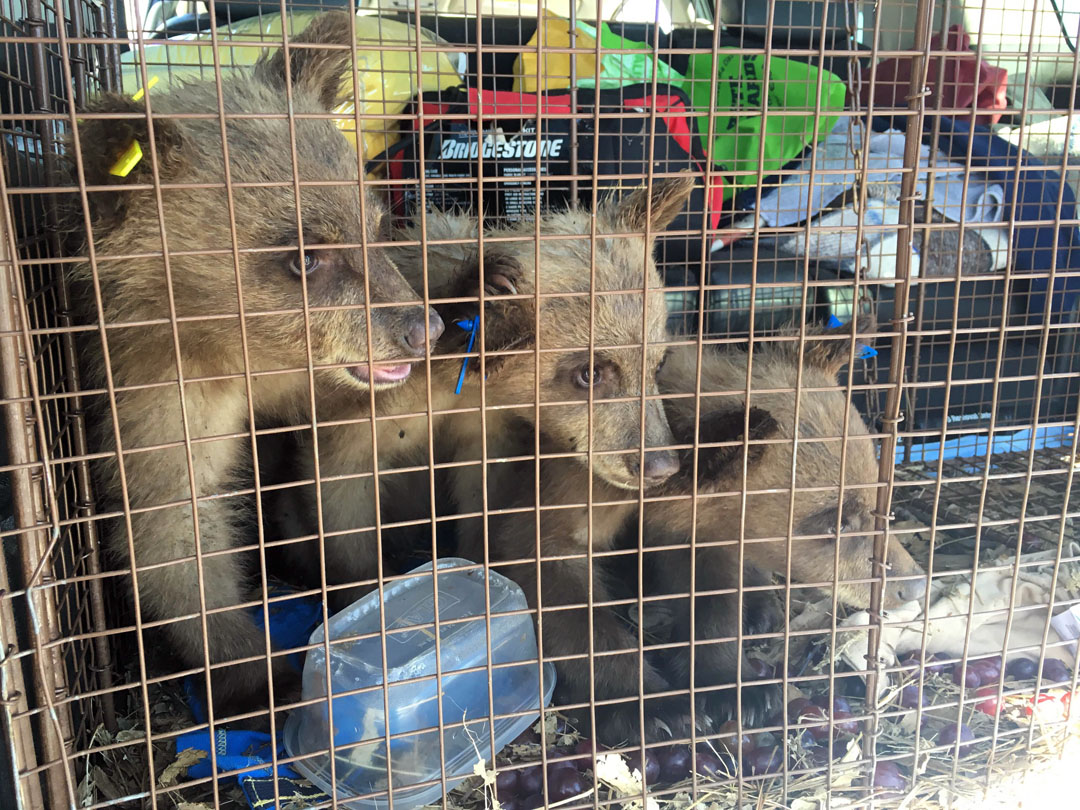It was Independence Day weekend 2016, and Yosemite was bustling with people hiking, camping, and taking in the scenery. For most visitors, Independence Day is a welcome break, a long weekend in the middle of summer. For park staff, it’s the busiest time of year, and employees across the park work hard at their jobs through the holiday providing visitor services and protecting the park. That morning, the wildlife management staff got one of those calls they dread the most: a bear was hit and killed by a car while crossing Tioga Road.
Between 1995 and 2017, an average of 18 bears have been reported hit by vehicles each year in Yosemite. Of those, 27 percent are found dead or are euthanized after park rangers determine the bear has an incapacitating injury. Bears that aren’t incapacitated by their injuries typically flee and their fates remain unknown. Some are OK, some sustain an injury that will give them a lifelong limp, and others ultimately die as a result of their injuries. Most bears are hit by cars from June through September, which coincides with Yosemite’s busiest months for visitors and the time during which bears are most active.
Ultimately, the human-bear management story in Yosemite is a metaphor for all the ways people and bears overlap in this beautiful place. Bear-vehicle collisions are possibly the most visual, most literal, and most heartbreaking example. While being called to a bear hit by a vehicle is unfortunately common, this particular incident was anything but routine. When rangers arrived on scene, they discovered that the dead bear was a lactating female and that there had been possible sightings of three cubs in the area. This news forced biologists to drop everything else to focus on these three orphaned cubs.
Cubs are generally not successful surviving in the wild in their first year without their mothers. Young bears spend their first 16 or so months with their mother learning how to forage, keep away from predators, hibernate in the fall and winter, and a whole host of other life skills. So even though young bears may not need the nourishment from their mother’s milk, they need her life experience and knowledge to survive. Consequently, leaving these cubs alone would almost certainly ensure their deaths.
With the hopes of getting these young bears through their first year, biologists and park staff mobilized quickly to find and capture the cubs while simultaneously seeking placement for the cubs at the Lake Tahoe Wildlife Care Center.
Biologists set out small metal cub traps and were fortunate to capture all three cubs within an hour of each other (similar captures in the past have taken more than 24 hours!). Shortly thereafter, biologists transported the cubs to the wildlife care facility. The cubs remained at the facility through the remainder of the summer, fall, and part of the winter. The goal of the rehabilitation was to fatten them up enough to give them the best chance at surviving on their own the following year with as little human interaction as possible so they would retain their natural fear of people when reintroduced to the park the following winter.
(Part two of this blog post will be available on March 5)


